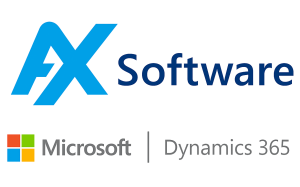D365 Implementation Project Costing
New implementations often referred to ‘greenfield’ sites provide a clean canvas for software implementation companies, based on their requirements and the deliverables expected they are generally straight forward to cost.
Existing Dynamics customers either wanting to restart a project, switch MS Partners or upgrade from a previous version such as AX2012 will usually require detailed investigation of their current systems configurations, interfaces and developments.
The detailed investigation here is often to pick out that which is fit for purpose and that which is not, there is no point throwing out a lot of hard work and effort and starting completely afresh if it can be avoided.
Obviously upgrades from earlier versions of Dynamics such as AX2012 impact a live system, planning has to be very precise There will be some similarities to swapping from a legacy non Microsoft product but there are many common themes of functionality that will carry across to your new version and where developments have been made these can be carried across to your new D365 environment.
How the customer wants to proceed in terms of pricing a project can vary and here we have detailed the two main approaches.
Fixed Price Based Projects
Where a fixed cost engagement is preferred it enables clients to know what the implementation will cost and essentially transfer the risk of over run to us.
Fixed price may prove to be more expensive than a T&M arrangement, particularly where the project goes smoothly or where the client takes a close interest in the management of resources as basically effort we as the supplier expected to expend is lessened. Incidentally this type of approach generally lends itself to a good project, the more the client takes on ownership the better they understand their new D365 business solution.
We are generally happy to offer a fixed price proposal based on our methodology as follows.
The planning stage stays the same. This will represent between 5% and 10% of the overall project cost and will enable us to prepare a detailed project plan and costing for the project.
Based on this, we will offer a fixed price proposal for the remaining three stages of the project. So, for example, a typical project might involve an initial planning stage of, say £50,000, which would lead to a fixed price proposal in the region of £450,000.
The fixed price proposal will be based on the project plan and will stipulate in detail the work to be carried out by both sides and the timescales for completion of this work. If our work over runs, then we will absorb the extra cost. If the client’s assigned tasks over run, then this may involve extra costs, re-planning with additional costs been added to the fixed price.
We always strongly emphasise the level of detail that needs to be conducted by the client in ensuring that their requirements are fully detailed, inexperience generally leads to poorly defined or loose requirements which reveal additional work in later stages.
It will be these requirements that will form the basis of our scope of work and its in all our interests to have these well understood from the outset and referenceable against D365, its against these that configuration and build are made, its acceptable to miss a few but too many and plans go awry.
Time & Material Based Projects
For some clients, the traditional time and materials contract is the best option. Whereas a fixed price contract will require some premium to be added (typically 10% to 15%) to accommodate the extra risk transferred to the supplier, this is not the case with time and materials.
T&M can often suit clients that have specific pieces of work they want their partner to complete for them.
Examples might include:-
Distinct pieces of work such as implementing a feature within a module i.e. Compensation within Human Resources
Reviews of existing business systems i.e. can we do things better such as streamline workflows
Works not associated with D365 such as help with defining business requirements
T& M also tends to suit clients that wish to adopt a blended approach, using their own internal resource alongside our own, cherry picking the areas that their team focus on and calling in our support as and when necessary.


